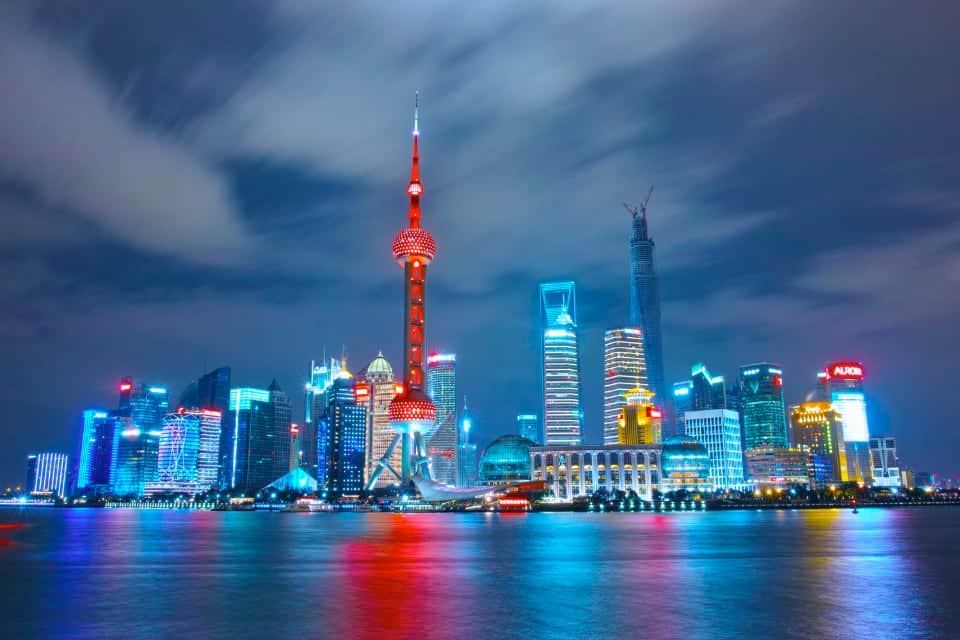CEOs: Is it Time to Double-Down in China?

The recent extension of Xi Jinping’s term for another 5 years and the subsequent departure of pro-market political leaders has raised the specter that China‘s relationship with the West may be entering a new era of difficulty. Because much of the consternation is painted in political tones, it is easy to overlook the challenges for business executives.
How can foreign firms compete in and with China going forward? There are three things senior Western executives can do to increase their odds of succeeding in China going forward.
- Focus on the Right Unit of Analysis
A common mistake many Western CEOs make in China is focusing on the wrong unit of analysis when formulating their competitive strategies. In a domestic context, most Western executives have learned the value of focusing their competitive analysis on specific competitors, customers, suppliers, and substitutes.However, deploying this approach in China misses the mark because it assumes that individual Chinese companies are largely free from direct government control and consequently make rational and uncoordinated decisions. This is simply not the case. The Chinese government at the central, provincial, and municipal levels directly own and control 150,000 companies (State-Owned Enterprises or SOEs).However, the State is not a silent owner in the background but directly determines key strategic decisions such as who takes up top leadership positions in these firms, their funding, access to State-funded research and technology, licenses, export and import approvals and more. These SOEs are some of the largest companies not only in China but in the world. For example, in 2022 27% of the Global Fortune 500 companies were Chinese, which was the highest percentage among all countries. Of these Chinese firms, a bit over 40% were State-owned Enterprises (SOEs).
Even when the State does not directly own and control a company, it nonetheless exercises significant influence over its strategic decisions. For example, in 2020 the state forced Ant Financials to cancel its $35 billion IPO, which would have valued Ant at about $315 billion. At that level, it would have been worth more than Société Générale, Deutsche Bank, Credit Suisse, Barclays, ING, Santander, and Goldman Sachs combined. After this, Alibaba, the parent of Ant financial, was further fined $2.8 billion for breaking anti-monopoly rules. As another notable example, in 2022 the State forced Didi, a ride-sharing company twice as large as Uber, to delist from the NYSE. The move caused the value of Didi to drop nearly 90% from a peak of $73 billion to $8.2 billion.
The consequence of Western CEOs not focusing their competitive analysis at the right level is that they can mistakenly assume traditional competitive rules are in place and overestimate the benefits that typically flow from competitive advantages such as product superiority or brand. For example, Fresenius Medical Care, based in Germany, is a top 10 medical device maker globally. Normally, its product superiority against large domestic players yields significant competitive advantage and market share penetration.
However, China’s national strategy of ensuring indigenous domestic players dominate led it to direct Chinese hospitals to increase their purchases of domestically sourced medical devices to 70%. Consequently, Fresenius found that up against “national champions,” such as Mindray, its normal product superiority did not translate into normal market penetration. The lesson for Fresenius, and other foreign players, is that winning in China requires a deeper understanding of competitive advantage. A good starting part is reconceptualization of the unit of analysis to include the central role of the State.
- Establish Unassailable Partnerships
For those foreign firms that have a strong ambition to compete and win in China, going it alone can be a tough road. Forming broad and deep partnerships can be a more viable alternative, especially when done in ways that involve the State and align the State’s interest with the economic success of the partnership.Coca-Cola provides an illustrative example of this approach. In late 2016, Coca Cola restructured its bottling operations. Rather than trying to go it alone, for the northern part of China, Coca-Cola created a joint venture with COFCO, a state-owned enterprise officially known as China Oil and Foodstuffs Corporation and is China’s largest food processing company. COFCO took 65% of the new enterprise’s equity and Coca-Cola took 35%. This significant equity position by the State worked to align the government’s interests with Coke’s. In the south, Coca-Cola sold its minority ownership position in its bottling operations to Swire Pacific, its Hong Kong based partner since the mid-1960s.With its long experience in China, Swire knew that its interests in its bottling operations would be best protected if municipal governments in the locations of the bottling operations had equity ownership. While taking ownership positions in commercial enterprises by municipalities is not common in many Western countries, in China cities gain important revenues and political advantages through enterprise ownership.
In fact, over 99% of all SOEs in China are owned by provinces and cities. Swire Coca Cola partnered with nearly twenty local companies in setting up bottling operations, including Swire Guangdong Coca-Cola (which was 62.96% owned by Swire Pacific) and Shanghai Shen-Mei Beverages and Food Company (53.6% owned by Swire Pacific). In almost every case, the Chinese partner was a SOE and the SOE was owned by a municipal government. With a large SOE as its partner in the north and multiple municipalities and their SOEs in the south, Coca-Cola created a network in which the State’s economic interests were aligned with Coke’s. This has helped it become more responsive to shifting consumer tastes and has helped Coca Cola position itself more as an insider in China.
- Top Grade Your China Talent
In addition to focusing on the right unit of analysis and potentially forming partnerships of sufficient breadth and depth to form an aligned and protective circle around its operations in China, the wisest of foreign executives recognize that exceptional leadership is required in the country to ensure continued success. This leadership includes both expatriates and local leaders.There is nothing inherently wrong with utilizing expatriate talent within a Western firm’s operations in China. However, the size and scope of the true nature of competition in China is such that the traditional 3-year expatriate assignment to “gain some exposure to a critical market” is too narrow and short-sighted. Assignments of 5 years or more, with the objective of diving deep into the country and culture, are more appropriate for China.While expatriate leaders can serve a purpose, there is little substitute for strong local leaders. Local leaders have a deeper understanding of market conditions and political realities, know the language, and are better suited to make lasting, trusting relationships. To reach their full potential, these leaders require not only strong development opportunities and formal development programs in China but also need to be included in development programs and opportunities outside China. They need exposure to best practices that can then be re-imported back into the company’s operations in China.
It seems clear that going forward Enterprise China—a combination of commercial companies and the State—will dominate competition within the country. The stakes for foreign firms are increasing. Foreign companies will either need to double down and commit their full energies and attention to competing to win in China or face difficult times ahead.
Foreign executives can only formulate intelligent and successful strategies for competing in China if they take this larger perspective. While going it alone can be successful in China, forming many wide and deep partnerships can create a self-interest for the State to protect the foreign firm. Finally, taking the extra steps to ensure that the foreign firm has the right caliber of expatriate and local leaders is key to sustaining success both today and in the long run.
Written by Allen J. Morrison, Ph.D., Professor of Global Management Thunderbird School of Global Management.
Parts of this article were adapted from “Enterprise China: Adopting a Competitive Strategy for Business Success” (WILEY 2022) by Allen J. Morrison and J. Stewart Black.
Have you read?
The World’s Largest Economies, 2022.
International Financial Centers Ranking, 2022.
These are the countries with the Highest Average Salaries, 2022.
Ranked: The World’s 500 Most Populous Cities, 2022.
Countries and territories with the largest population, 2022.
Bring the best of the CEOWORLD magazine's global journalism to audiences in the United States and around the world. - Add CEOWORLD magazine to your Google News feed.
Follow CEOWORLD magazine headlines on: Google News, LinkedIn, Twitter, and Facebook.
Copyright 2025 The CEOWORLD magazine. All rights reserved. This material (and any extract from it) must not be copied, redistributed or placed on any website, without CEOWORLD magazine' prior written consent. For media queries, please contact: info@ceoworld.biz








